 USA – USS St Louis, Milwaukee, Charleston
USA – USS St Louis, Milwaukee, CharlestonWW1 and prewar USN Cruisers
Atlanta class | USS Chicago | USS Newark | USS Charleston | USS Baltimore | USS Olympia | USS Philadelphia | USS San Francisco | Cincinatti class | Montgomery class | Columbia class | New Orleans class | Denver class | Chester class | Omaha classUSS New York | USS Brooklyn | Pennsylvania class | Saint Louis class | Tennessee class
The American semi-armored cruisers
The St. Louis-class cruisers were a bit of exceptions in the USN cruiser lineage. They began as a replacement for the old USS Olympia, but went through several redesigns over time, before development was rushed up as part of the naval buildup touched off by the Spanish–American War. They were authorized in fiscal year 1901, by Congress act of 7 June 1900. Only three were built, as it appeared soon the design was an unsatisfactory compromise.
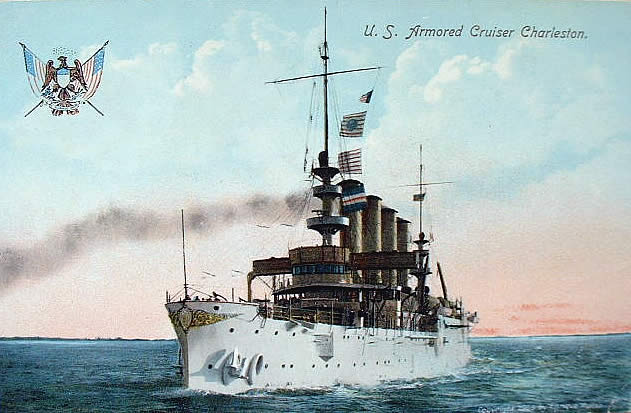
Postcard showing C-20 by Henrique Muller (src navsource.org)
Designated C20, 21 and 22, USS St. Louis, Milwaukee and Charleston were started in 192 (January and July), launched in 1904-05, and completed in May, August 1906 and October 1905 for USS Charleston, so the class should have been named Charleston, as she was the first laid down and completed. Their prewar career was pretty uneventful as their wartime career (Atlantic patrols) and USS Milwaukee was lost in 1917, stranded off California, while the other two were decommissioned in 1922 and sold in 1930.
Design of the Saint Louis class
During the design phase many decisions were made to raise the size of the last protected cruiser, the Denver class (1900) which displaced 3,200 tonnes, or the Columbia and their 7,000 tonnes, to 9,700 long tons (9,900 t), to augment armament and range, but also includes added protection without loss of speed (which included a larger powerplant). The protection choices made earned them the designation “semi-armoured cruiser”, pretty unique in the USN and never repeated.
The other peculiarity was to stick to a single main armament calibre, the 6-inch (152 mm) guns instead of stacking 8-inch (203 mm) guns. Space gained was freed to add more coal capacity. As completed, the Saint Louis class displaced 9,700 long tons, the same displacement as British armoured cruisers such as the RN Monmouth class. It was a clear-cut example of warship design growth, but which generally was considered an intermediate solution which fit nowhere in the USN doctrine.
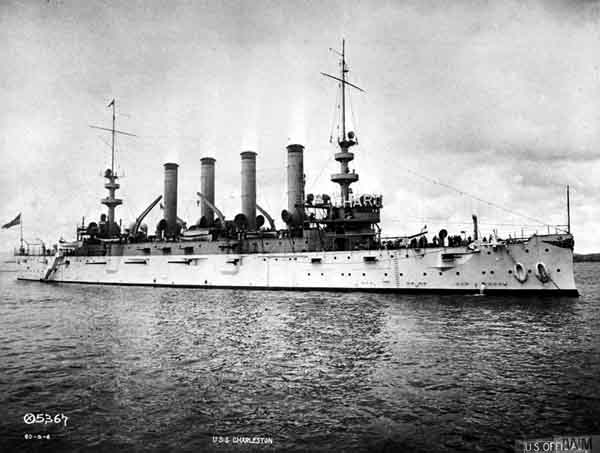
USS Charleston as completed in 1905. The two-tone livery was replaced by medium grey in 1917.
Powerplant
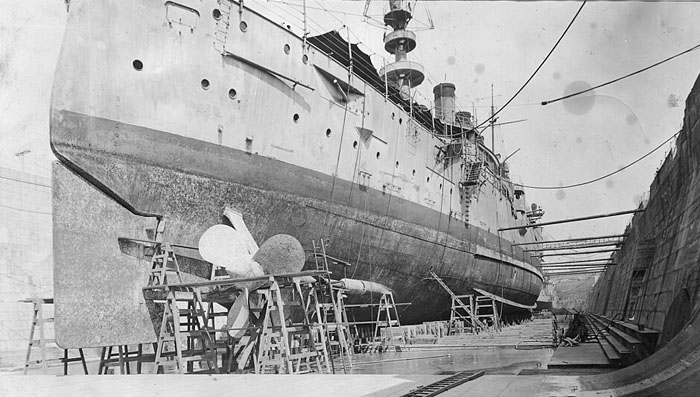
These smaller armoured cruisers were powered by two shafts mated to two vertical four-cylinder triple-expansion engines (VTE) fed in turn by sixteen coal-fired Babcock & Wilcox straight-tube boilers. They worked at a 250 psi (1,700 kPa) steam pressure, and together allowed the engines to deliver a total output of 21,000 ihp (16,000 kW). Top speed was therefore 22 knots (41 km/h; 25 mph) as designed, with slightly more achieved on trials:
Milwaukee reaching 22.22 kn (41.15 km/h; 25.57 mph) on a total output of 24,166 ihp (18,021 kW).
In peacetime, they carried 650 tons, increased to 1,650 tons and up to 1,700 in wartime (USS Charleston).
Given their reduced dimensions compared to the contemporary USN armoured cruisers, their powerplant produced just slightly less (21,000 vs. 23,000 ihp on the Pennsylvania class).
Protection
Armour used Harvey Steel. It was similar to that of an armoured cruiser, not a protected cruiser, but with lighter figures in armour thickness. A protected cruiser mostly had a protective internal deck just above the waterline and extra protection over the magazines and powerplant. Here, the belt and armament casemate walls and CT were well protected, although lighter compared to the current armoured cruisers of the time such as the Pennsylvania class.
The armour plates were made with the Harvey process for hardening surfaces.
Waterline Belt: 4 in (102 mm) thick, covering also the machinery spaces
Upper Belt 4 inches over the casemate.
Protective deck 3 inches (76 mm) sloped sides and both end, 2 in (51 mm) flat section.
Conning tower 5 inches (127 mm) walls.
On the two other classes, Pennsylvania and Tennessee, this was up to 6 and 9-inches.
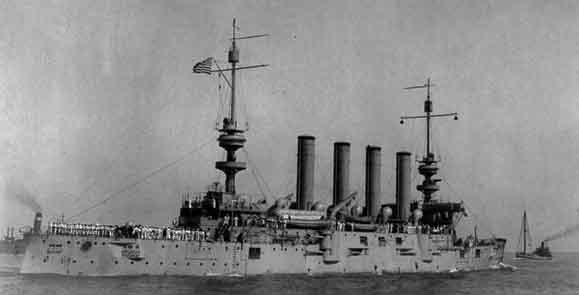
USS Saint Louis, circa 1910
Armament
The Saint Louis armament stayed about the same as the Pennsylvania-class armoured cruisers, apart the main turrets were dispensed of, and only the secondary battery remained. The figures for the tertiary guns were also the same, to the exception of eight 1-pdr guns instead of just two. So in all they carried fourteen 6-in/50 caliber Mark 6 guns upgraded during fitting out to the Mark 8 on USS Milwaukee. Two were mounted fore and aft on the deck, and the remainder placed in open in casemates along the sides.
The tertiary armament to deal with torpedo boats was generous, with eighteen 3-inch (76 mm)/50 caliber rapid fire (RF) guns, twelve 3-pounder (47 mm) (1.9 in) RF guns and a mix of four 1-pdr (37-millimetre) (1.5 in) automatic guns, and eight 1-pounder RF guns plus two .30 cal. (7.62 mm) machine guns such as the M1895 Colt–Browning machine guns that can be mounted on launches for landing parties. Unusually, they carried no torpedo tubes.
6″/50 caliber Mark 6 guns
These were usually used as secondary guns on standard battleships, from USS Main to USS Montana (Mark 8). They were of the exact calibre 49, not 50.
Specs Mark 6
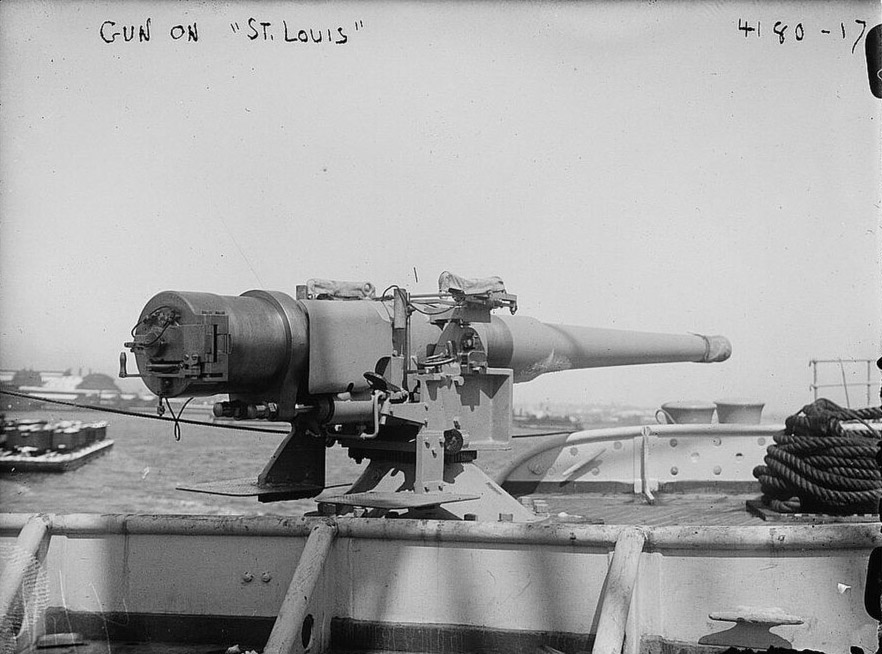
Mass: 18,628 lb (8,450 kg) with breech for 300.2 in (7,630 mm) long, 294 in (7,500 mm) bore (49 calibers) barrel
Shell: 105 lb (48 kg) naval armor-piercing 6 in (152 mm)
Elevation/Traverse: −10° to +15°, −100° to +100°
Rate of fire: 6 rounds per minute
Muzzle velocity: 2,800 ft/s (850 m/s)
Effective range: 15,000 yd (14,000 m) at 14.9° elevation WWI charge
More on navweaps.
3″/50 caliber guns Mk III/V/VI
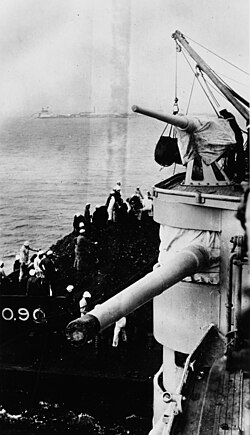 The Saint Louis had eighteen of these brand new guns, mounted on a pedestal Mount for -10° to +15° angle. They were installed in casemates along the hull, in the battery deck and in the hull below, in several positions, including three forward, two aft, two amidships, to above.
The Saint Louis had eighteen of these brand new guns, mounted on a pedestal Mount for -10° to +15° angle. They were installed in casemates along the hull, in the battery deck and in the hull below, in several positions, including three forward, two aft, two amidships, to above.
Specs Mark 6
Dimensions and Weight: 2,086 pounds (946 kg) with breech, 153.8 inches (3.91 m), barrel 150 inches (380 cm) bore 50 calibres
Shell: Complete 24 lb (11 kg), 13 lb (5.9 kg) projectile: AP, HE, Illumination
Elevation/Traverse: -10° to +15°, 360°
Rate of fire: 15 – 20 rounds per minute
Muzzle velocity: 2,700 ft/s (820 m/s)
Maximum range: 10,000 yd ( m) at 15° elevation
Sights: Peep-site and Optical telescope
47mm/40/45 Driggs-Schroeder Mk I/II
Twelve 2-pounders among these /40 Mark I and /45 Mark II were installed on the superstructures (navypedia and other sources) under masks. Initially, they were US licence copies of the Hotchkiss. They used brass cartridges with fixed projectiles, manufactured by the American Ordnance Company in Bridgeport, Connecticut and others by Driggs Ordnance Company. Specs as the corresponding Hotchkiss 2-pdr.
1-pounder guns and RF 1pdr
These ships in the superstructures had four 1pdr one shot hand-loaded, and eight rapid fire 1-pdr (gravity fed) to deal with any threat at close range. Their volume of fire was a clear deterrent. They were not the original British guns, the famous “pom-pom”, made from a scaled up design by famous engineer Hiram Maxim, but their US-built licence counterparts: Driggs-Schroeder heavy Mk I. Essentially primitive heavy machine guns. This was completed by two 2 × .30 calibre Lewis machine guns on pintles that could be installed on boats for landing parties. It’s possible the four 1-pdr.
Specs Mark 1
Mass: 410 pounds (186.0 kg), 6 ft 1 in (1.85 m), barrel 3 ft 7 in (1.09 m) L/29
Shell: 37 x 94R Common Shell, 1 lb (0.45 kg), 37-millimetre (1.457 in)
Action: automatic, recoil, ~300 rpm (cyclic) ROF
Muzzle velocity: 1,800 ft/s (550 m/s)
Maximum range: 4,500 yards (4,110 m)
Filling weight: 270 grains (17 g) black powder
Modifications
In 1911, the obsolete 1-pdr guns and machine guns were removed, four saluting guns being fitted instead. From 1917, two 6-inch guns and all but four 3-inch were removed. Instead, two 3-in/50 AA guns were added for self-defence.

Auxiliary Radio room plan on USS Charleston
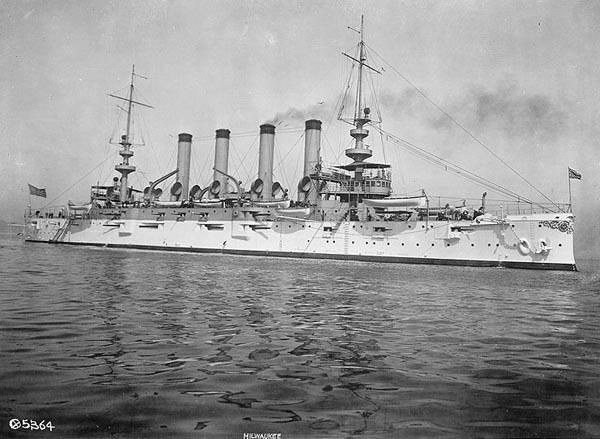
USS Milwaukee after completion (C21)
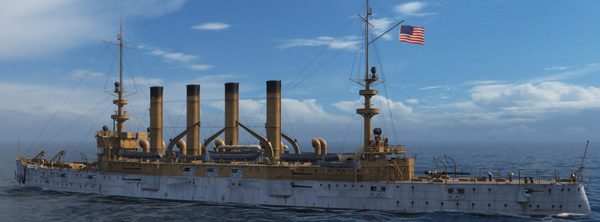
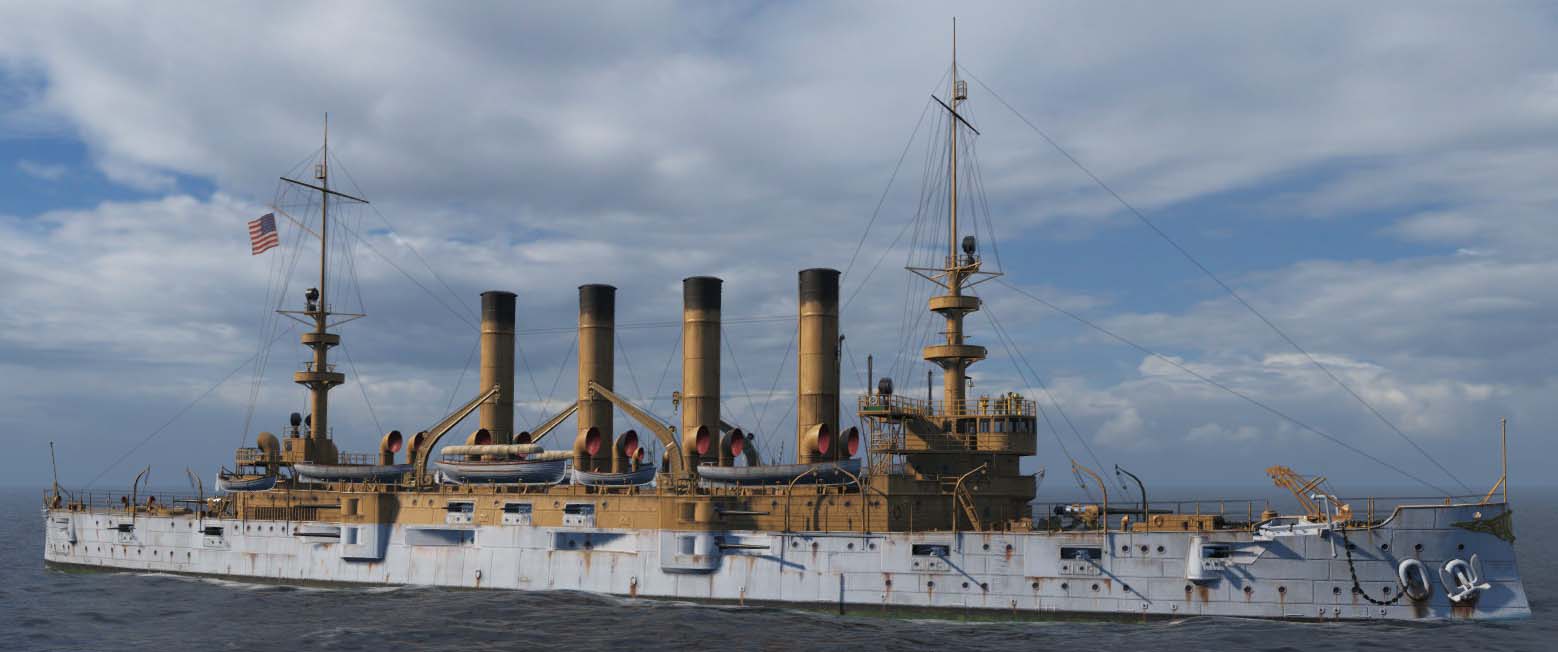
Wow’s rendition of the St Louis class as built

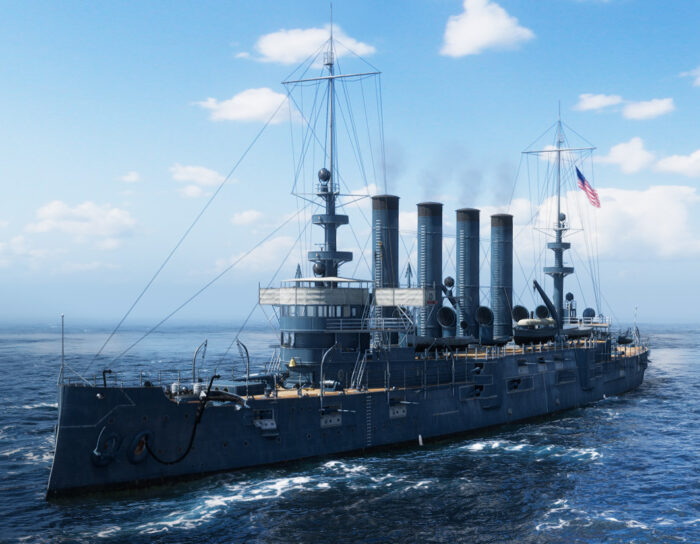
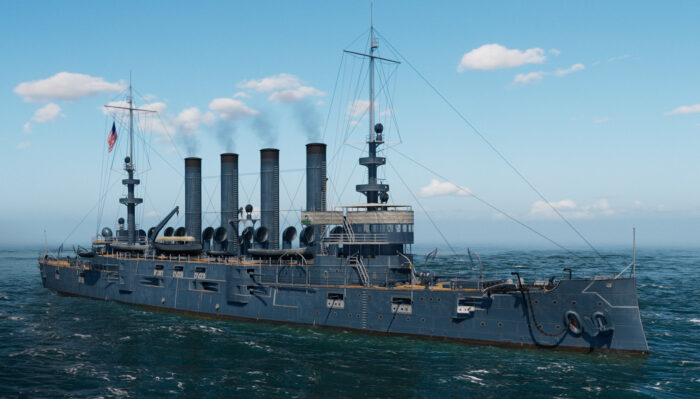
WoW impressions of USS Charleston

Illustration of the USS St Louis in 1912.
⚙ specifications |
|
| Displacement | 9,700 tonnes, 10,839 tonnes FL |
| Dimensions | 426 x 66 x 22 feets (129,9 m x 20,12 m x 6,86 m) |
| Propulsion | 2 shafts VTE, 16 B&W or 32 Niclausse boilers, 21,000 ihp (16,000 kW) |
| Speed | 22 knots |
| Range | coal 650/1650/1700 tonnes: 6200 nm at 10 kts |
| Armament | 14 x 6 in, 18 x 3in, 12 x 3pdr, 8 x 1pdr |
| Protection | Harvey steel, belt 4in, Armament 4in, Conning Tower 5-in |
| Crew | 673/767 sailors and officers |
The Saint Louis class in action
Saint Louis class ships was built at Neafie & Levy, Philadelphia, Milwaukee at Union Iron Works, San Francisco and Charleston at Newport News Shipbuilding, Newport News, Virginia.
 USS Saint Louis
USS Saint Louis
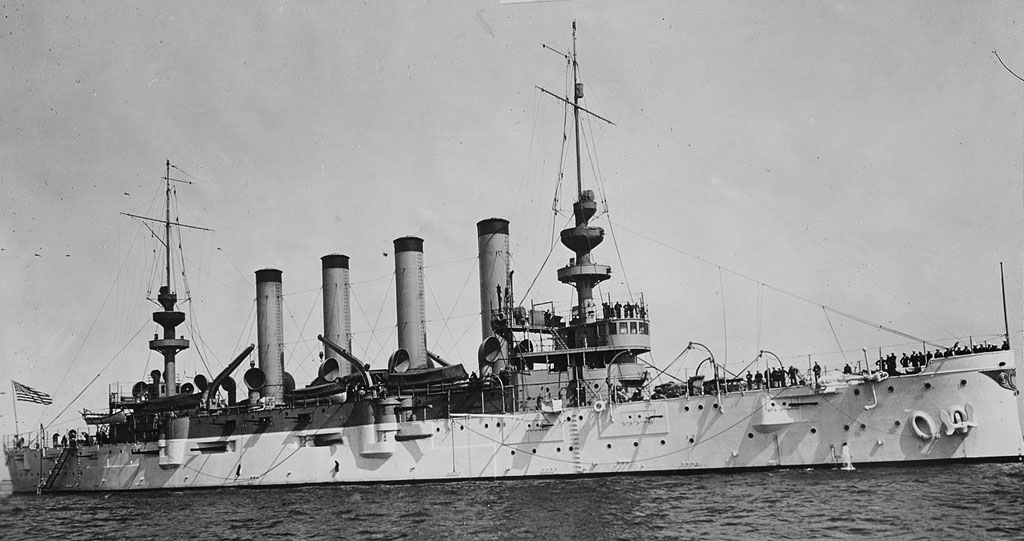
USS Saint Louis was assigned to the Pacific Fleet, departing Tompkinsville near New York on 15 May 1907 just after her trials to sail to Port Castries in the Caribbean, Bahia, Rio de Janeiro, Montevideo, Punta Arenas, Valparaíso, Callao, and Acapulco, before reaching her base in San Diego, california, on 31 August 1907. At that time indeed the Panama Canal was still not operational and the crew enjoyed a long crossing at sea, a way to familiarize with the ship and exercise. St louis operated off the west coast in 1908, reached Honolulu in June, ad visited Pacific Central American waters until October 1908. By November 1909 she was back in Puget Sound, placed in reserve and decommissioned.
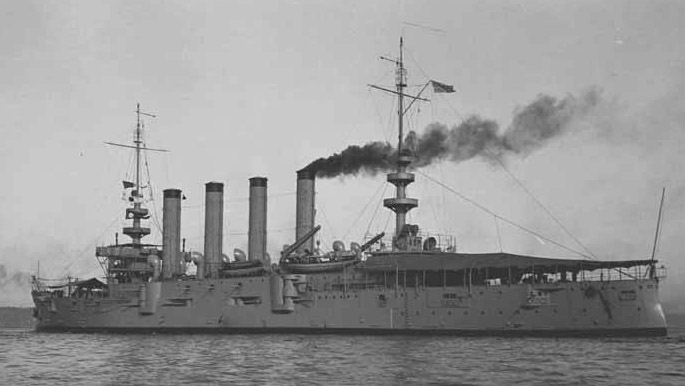
She was recommissioned and replaced in reserve 1910-1911 and in July 1911 sailed for San Francisco, used as receiving ship. In February 1912 after maintenance she joined the Pacific Reserve Fleet and until April 1913 operated with the Oregon Naval Militia. Back from reserve, she departed Puget Sound on 24 April 1914, receiving ship at San Francisco, then Pacific Reserve in February 1916. She would sail to Honolulu, Pearl Harbour on 29 July, starting a career as a tender for Submarine Division Three, and doubled as station ship. The interned German sloop Geier was boarded from a St. Louis party to prevent the crew to scuttle their ship. Geier then was pressed into USN service as USS Schurz.
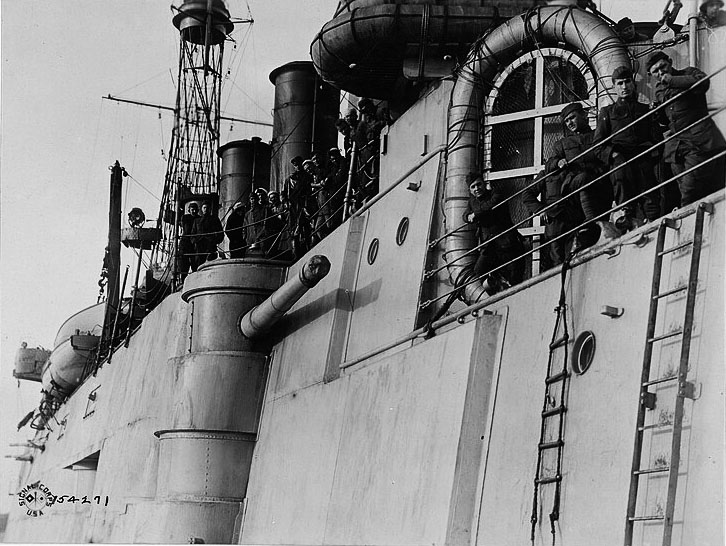
USS St Louis was in reduced commission on 6 April 1917, and she departed Honolulu to join the Atlantic force escorting convoys for Europe. before departing at San Diego, she took 517 National Naval Volunteers and apprentice to reach her full wartime complement of 823. In May 1917 she was crossing via the Panama Canal Zone, embarking Marines, the 7th, 17th, 20th, 43d, 51st and 55th companies, carried to Santiago de Cuba and Philadelphia. She was started her first convoy escort mission on 17 June 1917, and later was part of Group 4, American Expeditionary Force. After maintenance to Boston in July she made six round trips to Europe without incident. She carried during one of her voyages in October 1917 members of a high-level U.S. Commission for a conference.
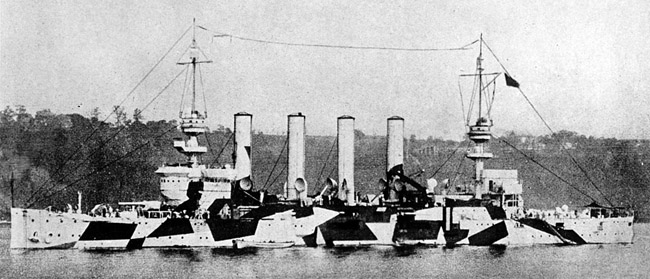
Saint Louis camouflaged in 1918
After the Armistice was signed and the war ended, St. Louis resumed her trips, this time ferrying troops back home, 8,437 troops to Hoboken, New Jersey, departing from Brest in France. The last of her seven trips ended on 17 July 1919, and she was sent to Philadelphia Navy Yard for maintenance. She was redesignated CA-18 in July 1920, and served with the European Squadron, between Sheerness, Cherbourg and Constantinople. She joined the USN naval Forces in Constantinople on 19 October 1920, embarking refugees at Sevastopol and Yalta and later distributed food among refugees in the Bosphorus, the result of the unrest caused by the Russian Civil War, Turkish war with Greece and revolution. On 19 September 1921 she was in Malta and later sailed to Gibraltar.
Her interwar career was relatively uneventful. She joined Philadelphia to be pre-inactivated along the Washington treaty conditions, and decommissioned on 3 March 1922, and stricken from the list on 20 March 1930. She was sold for scrap on 13 August 1930.
 USS Milwaukee
USS Milwaukee
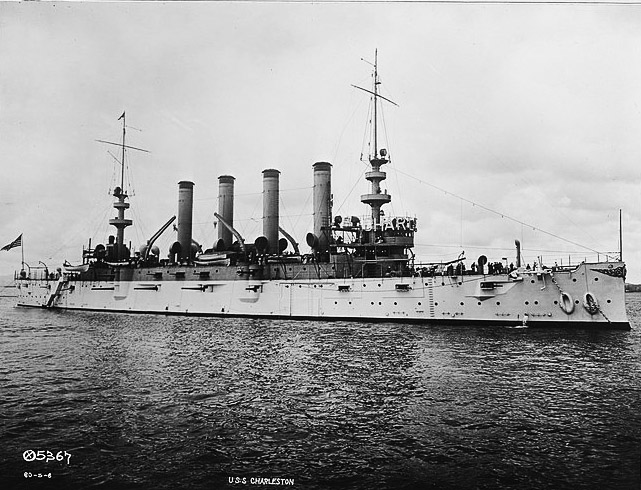
USS Milwaukee (CC-21) was commissioned on 10 December 1906, and her first Commander was Charles Augustus Gove. She made a shake down cruise off the Californian and Mexican coasts, until 28 May 1907. She then Milwaukee departed San Francisco, cruising off San Salvador, Costa Rica, with gunnery exercises with the squadron at Magdalena Bay. In March 1908, she was back in Bremerton, Washington, placed in reserve, except the summer 1908 Hawaii to Honduras cruise. Recommissioned at Puget Sound on 17 June 1913, she was assigned to the Pacific Reserve Fleet.
Until 1915 she made a trip to Honolulu with the Washington State Naval Militia, trained off the coast of California and in March 1916, served as tender to destroyers and submarines of the Pacific Fleet, in San Diego. She also patrolled Mexican waters, transported refugees and made survey missions, being overhauled at Mare Island, notably with the fittings of heavy equipments to serve as tender for destroyers and submarines.

USS Milwaukee after completion
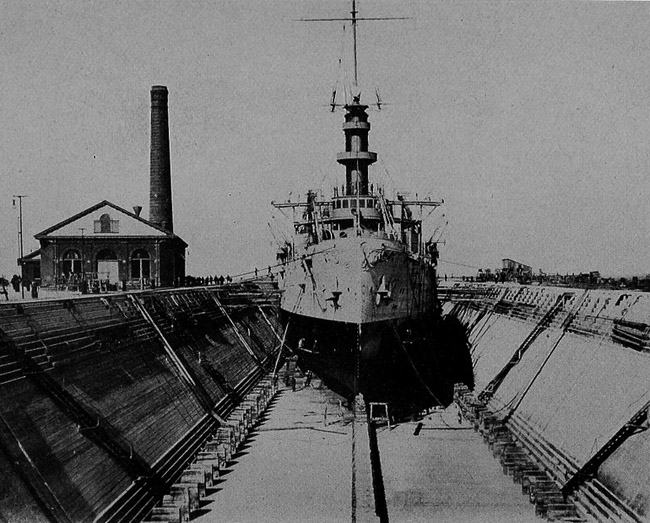
Milwaukee in drydock at San Francisco
Lieutenant William F. Newton took command of the ship in January 1917 as Coast Torpedo Force Commander. USS Milwaukee sailed for Eureka, California. There she was to assist the salvage of the USS H-3 submersible, running aground off Humboldt Bay in December 1916. On 13 January while disregarding locals recommendations, USS Milwaukee stranded on breakers at Samoa off Eureka. 421 enlisted men and their 17 officers were rescued by Life-Saving Humbold Bay team and local volunteers but the ship stayed there while H-3 was later recovered, repaired and returned to service.
USS was constrained to stay there. The captain underwent an enquiry martial court, while Milwaukee was eventually decommissioned on 6 March 1917. Other salvage missions could have been made but a storm in November 1918 badly damaged the ship, and eventually broke the hull in two. A new examining party estimated that she was no longer worthy of attention, and her name was struck from the Register on 23 June 1919. Her hulk was sold on 5 August 1919, and gradually scrapped in situ.
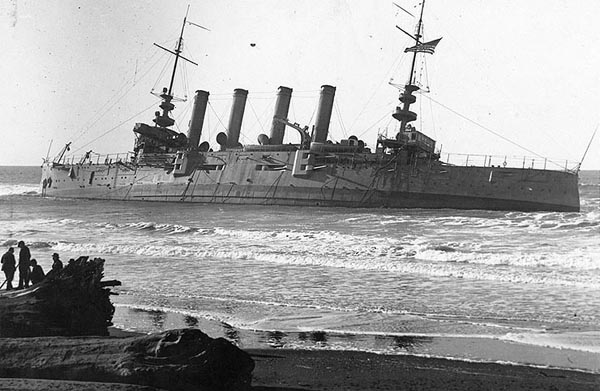
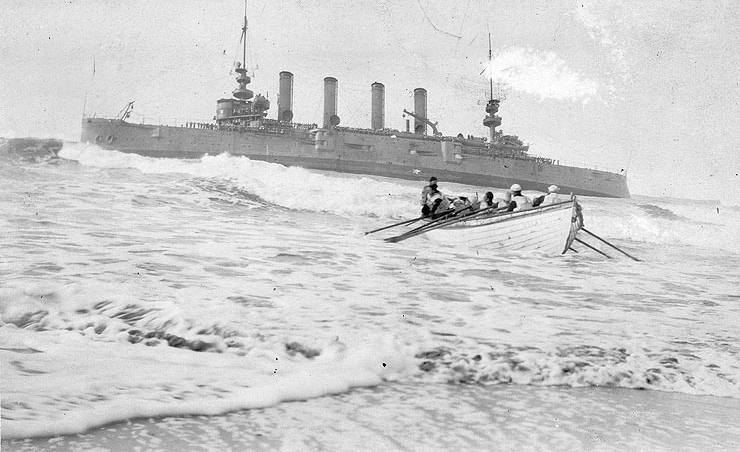
USS Milwaukee stranded off Eureka bay.
 USS Charleston
USS Charleston
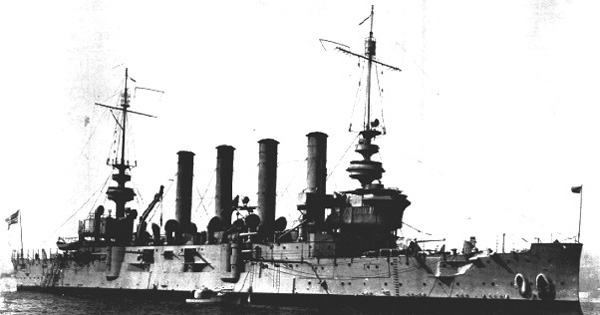
USS Charleston (C22)
In 1906 C-22 carried Secretary of State Elihu Root for good-will visits, notably at Panama in September. On 6 December 1906 she served with the Pacific Squadron, making exercises cruises along the line Magdalena Bay (Mexico) to Esquimalt (British Columbia) and fleet manoeuvres. From 10 June 1908 she entered Puget Sound Navy Yard, was overhauled and prepared to join the Asiatic Squadron, participating in June 1907 to the annual Portland Rose Festival. She left Puget Sound on 28 October 1908, and was the flagship of 3rd Squadron until 11 September 1910, then flagship of the Asiatic Fleet in Cavite for winter and Chefoo (China) in the summer, stopping along the way in China, Japan, Manchuria, and Russia. She was back to Bremerton and decommissioned for maintenance and reserve in September 1912, Pacific Reserve Fleet. Furthermore, she was a receiving ship in early 1916, flagship for the C-in-C Pacific Reserve Fleet.
She also served like her sisters as tender for submarines in the Panama Canal Zone. In April 1917, she returned in full commission, and by May Patrolled the Caribbean from St. Thomas in the Virgin Islands. She looked for, but found non-German commerce raiders, and carried Marines from Haiti to Philadelphia. Then started her convoy escorts time, back and two France, St Nazaire and Brest, and New York. She also trained naval volunteers and reserves from Newport and Havana. She escorted captured German freighters, patrolled from Cristobal to Bermuda to escort British transports to Hampton Roads.
In September–October 1918, she escorted ships to Nova Scotia, and made five more round trips to France notably carrying occupation troops and returning with combat veterans. She sailed for Bremerton on 24 August 1919 to be placed in reduced commission and sailed to San Diego in 1920 to serve as administrative flagship for the Pacific Fleet’s destroyer Squadron, until 4 June 1923. Back to Puget Sound she was inactivated, stripped of her armament, then stricken and sold to the Powell River Company, Ltd, not to be scrapped but serve in British Columbia as a floating breakwater for a large logging mill, ballasted and anchored and periodically from 1930. Her remains can be seen today here.
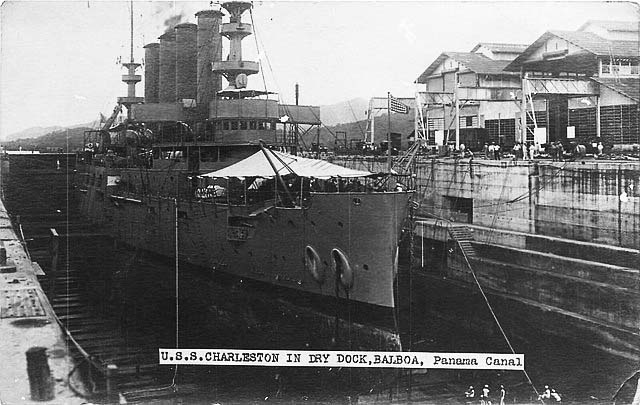
USS Charleston refitted at Balboa Bay, Panama canal zone.
Read More:
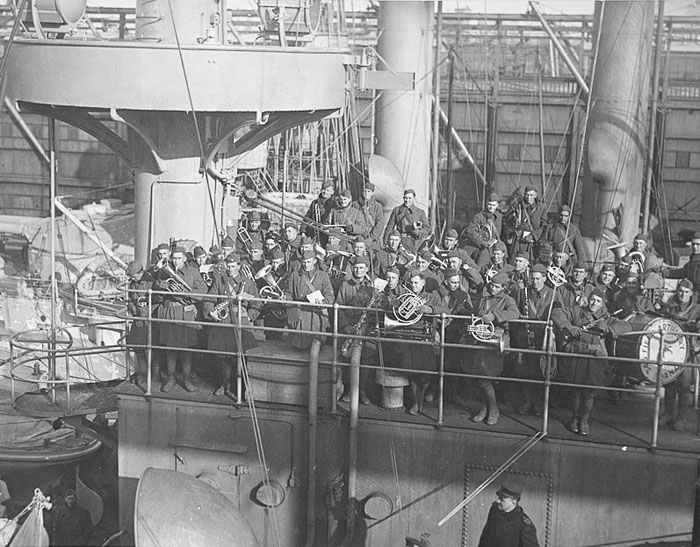
Demobilization: Band of the 346th Field Artillery on the bridge of USS St_Louis, 1918
Books:
Gardiner, Robert; Chesneau, Roger (1979) Conway’s all the world’s fighting ships 1860-1905 New York: Mayflower Books.
Jane’s Fighting Ships of World War I. London
Bauer, K. Jack; Roberts, Stephen S. (1991). Register of Ships of the U.S. Navy, 1775–1990: Major Combatants. Greenwood Press.
Friedman, Norman (1984). U.S. Cruisers: An Illustrated Design History. Annapolis, Maryland: Naval Institute Press.
Links:
https://www.navypedia.org/ships/usa/us_cr_st_louis.htm
https://www.globalsecurity.org/military/systems/ship/ca-18.htm
https://www.navsource.org/archives/04/c20/c20.htm
https://en.wikipedia.org/wiki/St._Louis-class_cruiser
http://www.navsource.org/archives/04/c22/c22.htm
http://www.navweaps.com/Weapons/WNUS_3-50_mk10-22.php
http://www.navweaps.com/Weapons/WNUS_1pounder_m1.php
http://www.navweaps.com/Weapons/WNUS_3pounder_m1.php
http://www.navweaps.com/Weapons/WNUS_3-50_mk2.php
http://www.navweaps.com/Weapons/WNUS_6-50_mk8.php
Video
From Drachinfels
3D
Model Kits
SSMODEL 1/700 511 Military Model Kit USN St.Louis Class Light CruiserS

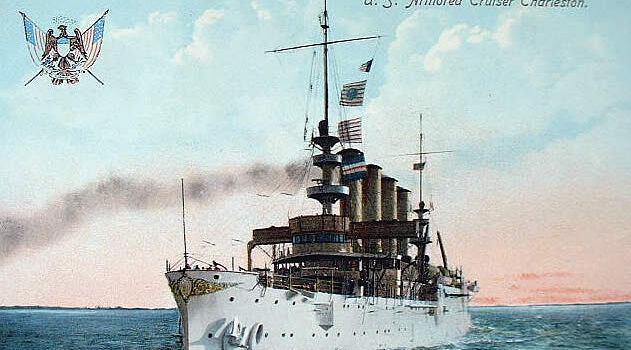
 Latest Facebook Entry -
Latest Facebook Entry -  X(Tweeter) Naval Encyclopedia's deck archive
X(Tweeter) Naval Encyclopedia's deck archive Instagram (@navalencyc)
Instagram (@navalencyc)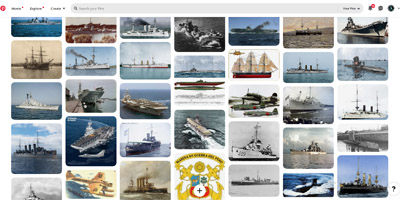

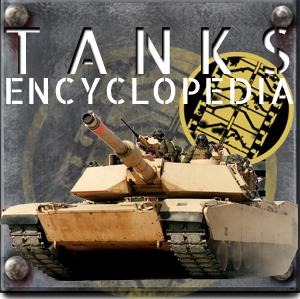
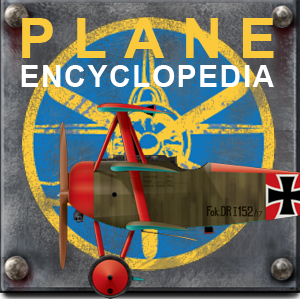
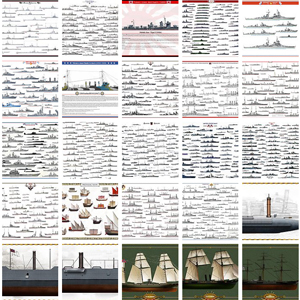
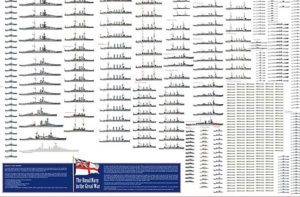
 French Navy
French Navy Royal Navy
Royal Navy Russian Navy
Russian Navy Armada Espanola
Armada Espanola Austrian Navy
Austrian Navy K.u.K. Kriegsmarine
K.u.K. Kriegsmarine Dansk Marine
Dansk Marine Nautiko Hellenon
Nautiko Hellenon Koninklije Marine 1870
Koninklije Marine 1870 Marinha do Brasil
Marinha do Brasil Osmanlı Donanması
Osmanlı Donanması Marina Do Peru
Marina Do Peru Marinha do Portugal
Marinha do Portugal Regia Marina 1870
Regia Marina 1870 Nihhon Kaigun 1870
Nihhon Kaigun 1870 Preußische Marine 1870
Preußische Marine 1870 Russkiy Flot 1870
Russkiy Flot 1870 Svenska marinen
Svenska marinen Søværnet
Søværnet Union Navy
Union Navy Confederate Navy
Confederate Navy Armada de Argentina
Armada de Argentina Imperial Chinese Navy
Imperial Chinese Navy Marinha do Portugal
Marinha do Portugal Mexico
Mexico Kaiserliche Marine
Kaiserliche Marine 1898 US Navy
1898 US Navy Sovietskiy Flot
Sovietskiy Flot Royal Canadian Navy
Royal Canadian Navy Royal Australian Navy
Royal Australian Navy RNZN Fleet
RNZN Fleet Chinese Navy 1937
Chinese Navy 1937 Kriegsmarine
Kriegsmarine Chilean Navy
Chilean Navy Danish Navy
Danish Navy Finnish Navy
Finnish Navy Hellenic Navy
Hellenic Navy Polish Navy
Polish Navy Romanian Navy
Romanian Navy Turkish Navy
Turkish Navy Royal Yugoslav Navy
Royal Yugoslav Navy Royal Thai Navy
Royal Thai Navy Minor Navies
Minor Navies Albania
Albania Austria
Austria Belgium
Belgium Columbia
Columbia Costa Rica
Costa Rica Cuba
Cuba Czechoslovakia
Czechoslovakia Dominican Republic
Dominican Republic Haiti
Haiti Hungary
Hungary Honduras
Honduras Estonia
Estonia Iceland
Iceland Eire
Eire Equador
Equador Iran
Iran Iraq
Iraq Latvia
Latvia Liberia
Liberia Lithuania
Lithuania Mandchukuo
Mandchukuo Morocco
Morocco Nicaragua
Nicaragua Persia
Persia San Salvador
San Salvador Sarawak
Sarawak Uruguay
Uruguay Venezuela
Venezuela Zanzibar
Zanzibar Warsaw Pact Navies
Warsaw Pact Navies Bulgaria
Bulgaria Hungary
Hungary

 Bundesmarine
Bundesmarine Dutch Navy
Dutch Navy Hellenic Navy
Hellenic Navy Marina Militare
Marina Militare Yugoslav Navy
Yugoslav Navy Chinese Navy
Chinese Navy Indian Navy
Indian Navy Indonesian Navy
Indonesian Navy JMSDF
JMSDF North Korean Navy
North Korean Navy Pakistani Navy
Pakistani Navy Philippines Navy
Philippines Navy ROKN
ROKN Rep. of Singapore Navy
Rep. of Singapore Navy Taiwanese Navy
Taiwanese Navy IDF Navy
IDF Navy Saudi Navy
Saudi Navy Royal New Zealand Navy
Royal New Zealand Navy Egyptian Navy
Egyptian Navy South African Navy
South African Navy






























 Ukrainian Navy
Ukrainian Navy dbodesign
dbodesign